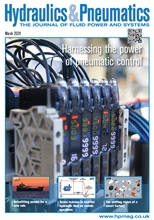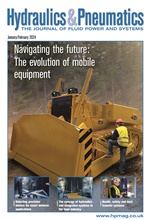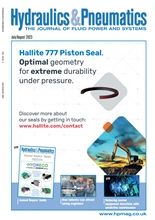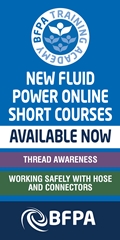- Home » Editorial » Pneumatics
Know your pneumatics – Continuous Position Sensing
Many other types of applications will also benefit, including materials handling, consumer packaging, small component assembly, machine building, and even tasks in the renewable energy industry, such as the positional control of solar panels as they track the sun. With the appropriate shock, vibration, moisture, chemical and water ingress resistance, continuous position sensing can be used in challenging environments reliably over very long periods of time.
Two-way data flow
The monitoring of sensor data via traditional discrete or analogue signals is one-way communication; this is sufficient to allow the remote monitoring of automated processes, for example. However, in order to implement Industry 4.0 strategies, two-way communications are required meaning a connection to a network such as Profinet or IO-Link. In terms of CPS implementation with pneumatics, it would include not only monitoring, but also automatic configuration at start up and/or during maintenance replacement.
Among many industry trends, the smart factory concept is moving from a reactive to a proactive mode of maintenance. If smart sensors can tell the end user what is wrong before failure, then maintenance personnel will be able to schedule repairs and avoid downtime. In many cases, the early sensor notification of issues allows system operators to investigate, consider, plan and schedule the required corrective maintenance for a time when production throughput is either low or can be stopped. This could be overnight, or during a larger planned plant maintenance shutdown.
Smart manufacturing plants can only implement a predictive maintenance approach by collecting significant amounts of sensor data; and that data ideally needs to be in real time. Furthermore, production line versatility, which is a key benefit of smart manufacturing for companies making a number of different products, needs data to support decisions and then adjust and re-balance lines. In both cases, a key factor is being vendor agnostic, which frees users to deploy and combine the optimum system components for their particular process.
Leveraging IO-Link
Another critical part in the success of Industry 4.0 manufacturing strategies is choosing the right protocol to connect sensors with controllers and actuators. Here, IO-Link provides the ideal solution, allowing two-way communications to receive data and then download a parameter to the device/actuator. As a result, processes can be adjusted remotely.
IO-Link is a relatively new open communications protocols that was introduced in 2008 by Siemens. The protocol is the first IO technology for communication with sensors and actuators to be adopted as an international standard (IEC 61131-9), meaning that devices can be integrated in the same way in all commonly used fieldbus systems and automation systems, right up to enterprise resource planning (ERP) level. However, it should be noted that IO-Link is not a fieldbus; it enables point-to-point communication between field devices and the automation system. Whereas integrating a fieldbus interface all the way down to the lowest field-level device was typically expensive, IO-Link is a simple, more economical system.
The advantages of IO-Link include the automatic detection and parameterisation of the IO-Link device, device monitoring and diagnostics, changes on the fly, and reduced spare part costs.
Ultimately, the key to unlocking the power of smart sensors is in making diagnostic information easy to access. IO-Link allows for cyclic data exchange capabilities so that programmers can easily send the information directly to where it is required; either to an HMI screen, a signal light or a maintenance request. If sensor or actuator parameters need to be changed or calibrated, this can be done remotely, even while the production line is still running, ensuring that shutdowns, stoppages and unnecessary costs are avoided.
-
Smart Manufacturing & Engineering Week
05 - 06 June, 2024
NEC, Birmingham -
HILLHEAD 2024
25 June, 2024, 9:00 - 27 June, 2024, 16:00
Hillhead Quarry, Buxton, Derbyshire UK










